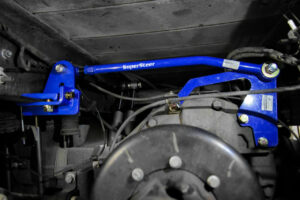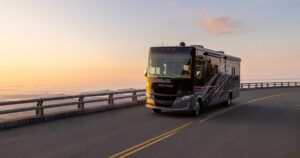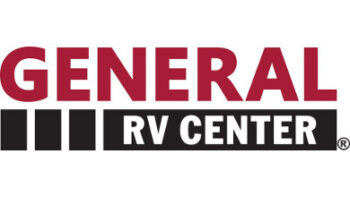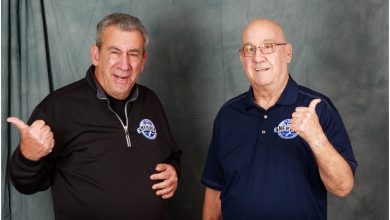How To Prepare Any RV for Off-Grid & Overlanding Adventures
Tips dealers can use to help RVers go off-grid safely — with upgrades and considerations for every RV type.
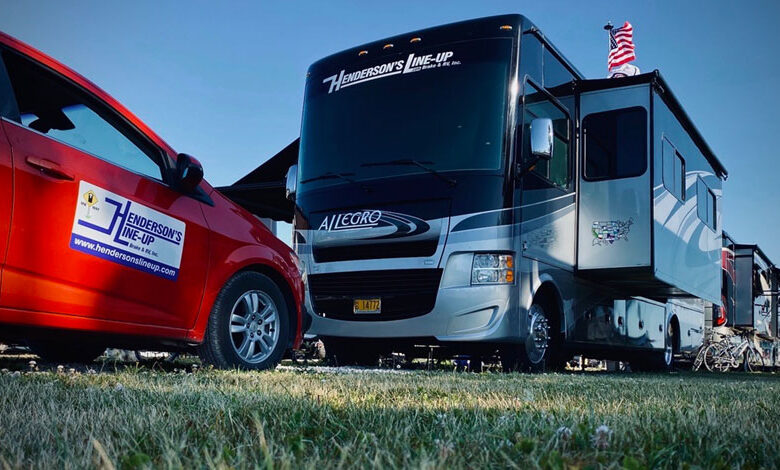
As more RVers venture beyond campgrounds and into the backcountry, the demand for off-grid readiness and safe, comfortable ride control is growing. Whether customers own a luxury Class A motorhome or a compact camper van, preparing for overlanding means more than just adding solar panels and calling it a day. Dealers have a key role to play in educating RVers about the right upgrades for their chassis and travel goals.
Class A Motorhomes: Luxury Meets the Limits
Class A rigs offer unmatched interior comfort and space, but their size and weight can limit their reach when it comes to rugged or remote camping, not to mention their frequent lack of ground clearance. That said, they can still access many beautiful off-grid sites and enjoy a smooth ride while getting there, especially with the right suspension and safety upgrades.
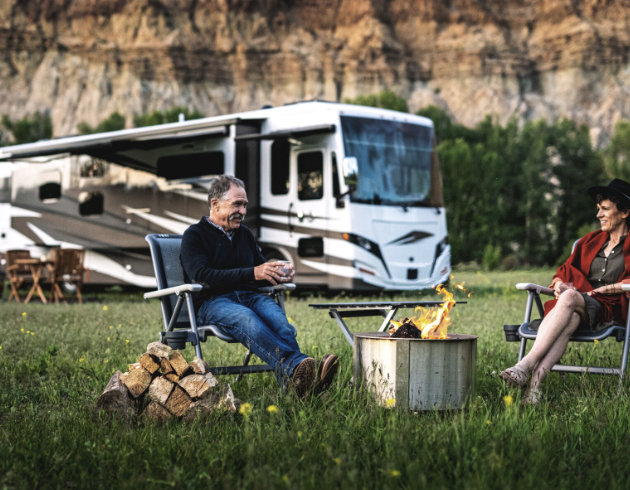
Recommended Upgrades:
- Heavy-Duty Suspension & Shocks: Replace stock shock absorbers with high-performance aftermarket units to minimize sway, bounce and driver fatigue. Take this even further with anti-sway bar upgrades and, on air ride coaches, motion control units to greatly reduce rocking and rolling while getting to the destination.
- Steering Control Units & Rear Track Bars: Reduce lane wandering and improve steering responsiveness, especially in crosswinds.
- TPMS: Preventing blowouts on long rural drives.
- Auxiliary Braking Systems: Critical if towing a vehicle.
- Solar + Lithium Battery Banks: Class A owners benefit from 600Ah to 1,200Ah lithium systems and high-output inverters for off-grid living.
- Water Conservation Tools: Filtration systems, tank upgrades and efficient fixtures support boondocking stays.
Class A Considerations:
Due to their high center of gravity, Class A motorhomes are susceptible to sway — especially when solar panels or rooftop gear raise the vehicle’s center of mass. Anti-sway bars, shocks and (on air ride coaches) motion control units help, but remember that added weight eats into available cargo capacity. Always weigh the coach when fully loaded and make sure that you’re running the proper tire pressure and are within the load ratings for the chassis and tires.
Class B Vans: Small but Mighty
Class B camper vans are nimble, fuel-efficient and increasingly favored by solo travelers and couples. Their compact size makes them ideal for tighter trailheads and forest access roads, but space limitations require smart, multifunctional upgrades.
Recommended Upgrades:
- All-Terrain Tires: Great for traction, but blocky tread can cause squirming on the highway. Choose carefully based on where the van will be
used most. - Lift Kits & Shocks: Improve clearance and handling, but confirm shock length matches final ride height. Upgraded shocks help balance on-road comfort with off-road control.
- Anti-Sway Bars: Essential for vans with rooftop solar or roof racks. Prevent excess sway without compromising travel.
- DC-DC Charging or Portable Power Stations: Maintain power while driving.
- Compact Water Filtration: Make natural water sources safe to drink with minimal storage footprint.
Class B Considerations:
Solar panels and roof-mounted gear increase sway. Weight should be monitored to ensure you stay within GAWR/GVWR limits (gross axle weight rating/gross vehicle weight rating). Class B rigs benefit greatly from steering control units and track bars to eliminate wander or tail wag.
Class C Motorhomes: Versatility in the Middle
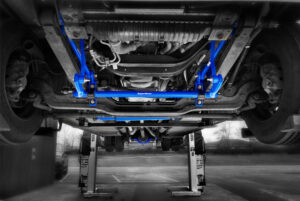 Class C RVs offer a balance of comfort and maneuverability, making them great candidates for off-grid travel with a few key enhancements.
Class C RVs offer a balance of comfort and maneuverability, making them great candidates for off-grid travel with a few key enhancements.
Recommended Upgrades:
- Upgraded Suspension: Control body roll and improve ride quality with high-quality aftermarket shocks and anti-sway bars, as well as motion control units for Super C coaches with rear air suspension.
- Track Bars & Steering Control Units: A front steering control unit and rear track bar is a particularly useful combination on the Ford E-series chassis, to reduce driver fatigue and improve stability in crosswinds.
- Composting Toilets or Gray Tank Expansions: Support extended boondocking without hookups.
- Solar Kits (300 to 600W) + 400Ah Lithium Banks: Sufficient for powering essentials.
- Underbody Protection: Skid plates protect tanks and valves on bumpy backroads.
Class C Considerations:
Most Class C rigs have a cab-over bed, which adds weight above the front axle. Anti-sway bars and shocks optimized for weight distribution are highly recommended. Tall spring packs can increase wander or shimmy without additional track bars. As with other types of rigs, we recommend weighing your Class C on the front and rear suspension individually to make sure the weight distribution is acceptable; confirm that tires are set to the correct pressure; and verify that the curb weight is within the GVWR/GAWR limits.
Truck Campers: Off-Road-Ready With the Right Setup
Truck campers shine when it comes to rugged, remote destinations. When mounted to a capable truck, they offer incredible flexibility — but weight distribution and chassis performance become even more important.
Recommended Upgrades:
- Load Carrying Upgrades: Rear airbags can be useful if your truck is often used without the camper installed, since you can vary the air pressure to adjust for whatever load you are carrying. SumoSprings or Timbrens are other good options for adding load capacity without having to worry about adjusting air pressure. Overloads or added leafs are a good way to go if you don’t plan on driving your truck without the camper installed.
- Sway Upgrades: Truck campers can cause quite a bit more sway than you would have with an empty pickup. In addition to the load carrying upgrades mentioned above, high-quality aftermarket shocks as well as anti-sway bar upgrades can do quite a bit to reduce rocking.
- Tie-Down Systems (e.g., Torklift): Secure the camper to the truck bed.
- Steering Stabilizers: Crucial for 3/4-ton and 1-ton trucks carrying heavy loads.
- DC-to-DC Chargers: Charge camper batteries while driving.
- Portable Solar Panels (200 to 400W): Offer flexibility in shaded areas.
Truck Camper Considerations:
Truck campers add substantial weight high above the rear axle, making tail wag and sway common. Anti-sway bars and track bars (especially on solid axle trucks) make a noticeable difference. Always weigh the loaded truck to confirm tire load capacity and proper inflation.
Overlanding Trailers: Rugged by Design, Still Need TLC
Purpose-built overlanding trailers are often marketed as “go-anywhere” options, but they still benefit from thoughtful setup for safety and comfort.
Recommended Upgrades:
- Independent Suspension Systems: For absorbing off-road shock.
- Electric Brakes & Brake Controllers: Keep towing safe on grades.
- Articulating Hitches: Prevent jackknifing and improve maneuverability.
- Onboard Solar Generators: Power lighting, refrigeration and pumps.
- Water & Fuel Storage Solutions: One suggestion would be RotopaX systems for easy, modular supply management.
Overlanding RV Considerations:
While smaller and more agile than motorized RVs, overlanding trailers are often towed through technical terrain. Maintaining proper tongue weight, regularly checking tire pressure and using a brake controller tuned for weight are keys to safety.
Suspension & Ride Control: What Every Off-Roader Should Know
When upgrading your van or coach’s suspension for off-road capability, it’s important to remember that you still spend quite a bit of time driving on pavement. Some upgrades that improve off-road or boondocking capability can reduce highway comfort or control.
- Tires: Aggressive blocky tread patterns are great in dirt but can cause squirming or tracking issues at highway speeds.
- Weight Distribution: Solar panels, roof racks or winches can raise your center of gravity, increasing sway and roll. Too much weight at the back of your rig can also make the front end too light and cause the steering to feel twitchy.
- Shocks: Make sure new shocks match your final ride height and balance on- or off-road performance.
- Sway Bars: Upgraded sway bars help with high center of gravity. Too stiff can reduce travel, but most overland rigs are heavy enough to offset this. Disconnects are an option for more serious terrain.
- Steering Components: Lift kits can cause bump steer. Upgraded steering dampers or self-centering control units can correct this and help in emergency scenarios like a blowout.
- Track Bars: Tall spring packs and extended shackles can cause lateral axle movement, leading to tail wag or wander. A track bar or Panhard rod can reduce this and restore stability.
- Weight Management: Always weigh your RV in travel-ready condition and confirm your tires are rated for the load. Set pressures accordingly.
Final Thoughts for Dealers
Overlanding isn’t a one-size-fits-all adventure. By understanding the strengths and limitations of each RV type and the modifications they require, you can better educate your customers and stock smarter. Help your customers dream big — and travel smart.
Your customers want freedom. You can give them confidence.
